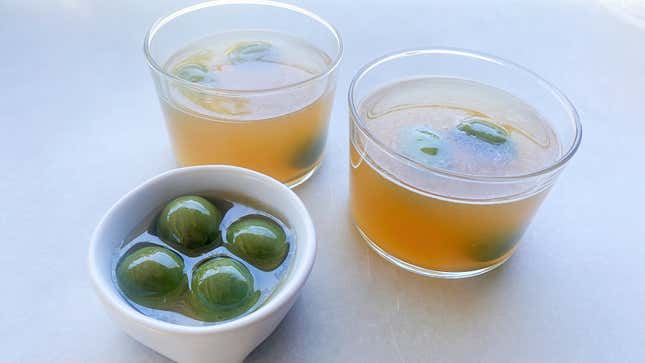
It would be fair to say the writers of Skillet are obsessed with brine. We love pickles, olives, and the salty, sometimes tangy liquids they come packed in. Most things are made a little better with salt, acid, and funk, which is why we add these preserved delicacies (and their brines) to a wide variety of foods and beverages, including beer.
I’m a big fan of plopping pickles in shitty beer, so it shouldn’t be surprising that I enjoy a few olives in a cold one. Referred to as a “beertini” in the Midwest, green olives—never black—are added to PBR or something similar, to give it a bit of savory flavor. The addition brightens the beer while obscuring its less desirable qualities. (I’ve always thought PBR had a weird sweetness, and the olives tempered it beautifully.)
Snag some olives for your beertini:
There aren’t a lot of rules around the beertini, except the beer should be cheap and the olives should be green. A pale, kind of watery beer pairs well with brine, giving the beverage an alcoholic Gatorade vibe. Stouts will obscure and conflict with the olive, and IPAs will taste even more bitter by comparison, though I will admit I tried this trick with a cloudy Hefeweizen, and it was delightful. According to PUNCH, the olives can be fancy, stuffed with blue cheese or anchovies or almonds, but they mustn’t be black, or Kalamata, or anything other than green. (My personal favorite green olive is the Castelvetrano, the king of green.)
How many olives you add to your beer is entirely up to you. Add a couple for a very—and I mean very—subtle effect, similar to that of an olive in a dry martini. Add a bit of brine, however, and the flavor profile of the beer changes noticeably; it’s not salty, exactly, but deeper, more interesting, and (surprisingly) more refreshing.









